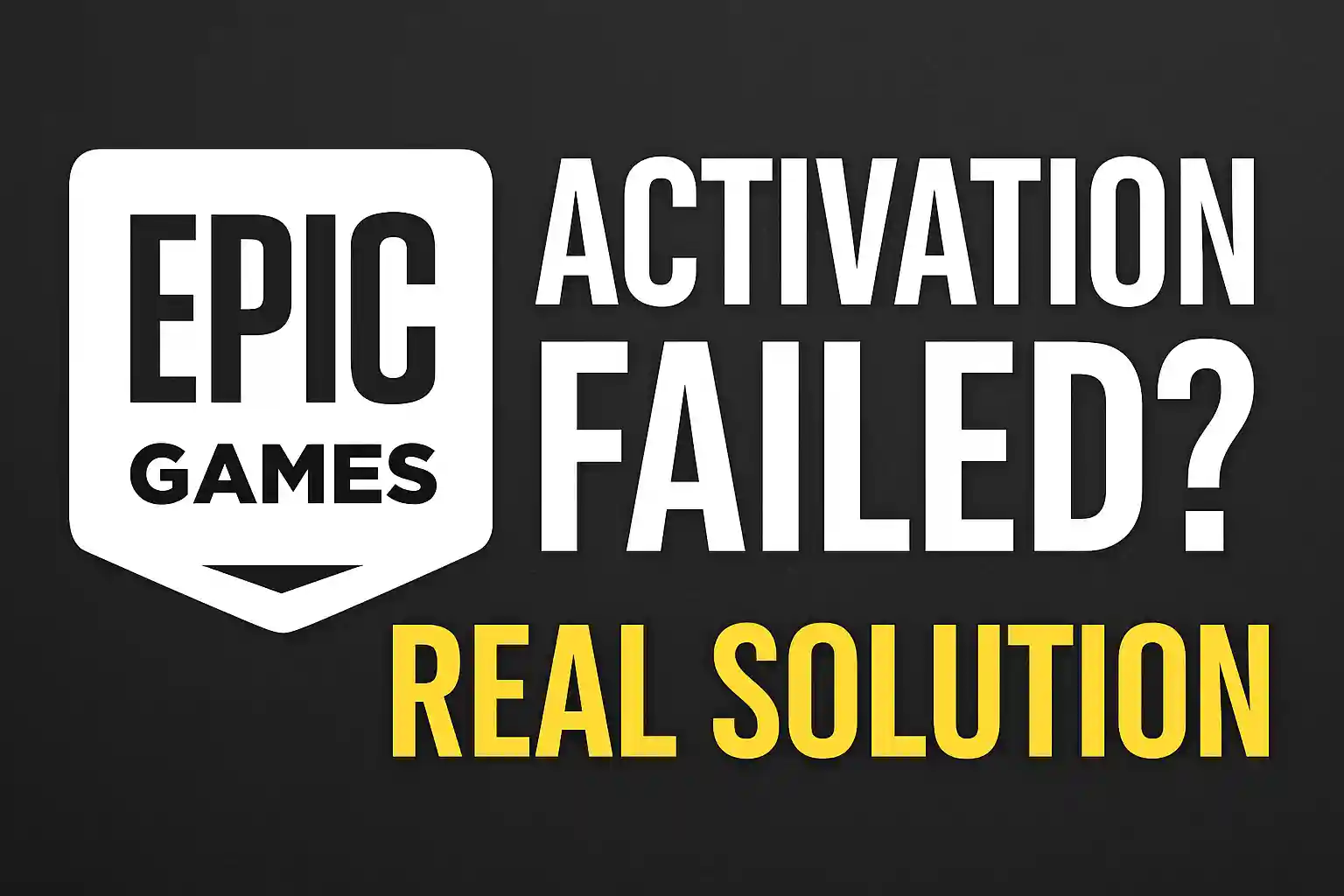How to Find the Best Laptop for Your Needs and Budget
To find the best laptop for your needs and budget, start by identifying your main tasks. If you need a laptop for basic use, look for an entry-level model with an Intel Core i3 or AMD Ryzen 3 processor and 8GB of RAM. For work or school, where you’ll be multitasking, go for a mid-range laptop with an Intel Core i5 or AMD Ryzen 5, 16GB of RAM, and an SSD for faster performance. For gaming or creative work, choose a laptop with a strong processor, dedicated graphics, and a high-resolution display. Make sure battery life, portability, and brand reliability are on your priority list to get the best value for your money.

Table of Contents
Toggle1. Introduction
When it is a matter of buying a laptop, it can be very mind-boggling because there are just too many models. Taking the performance, display quality, and storage options, among many others, into consideration will make you get the right type for your particular use. Is it a student who needs to do homework on his/her laptop? A working professional looking for a laptop to make business work easier? A gamer looking forward to better graphics and higher speeds? This is an exhaustive look at what you should consider before getting a laptop.
1.1 Importance of choosing the right laptop
Finally, this choice is important as a laptop has to be the key to increase productivity and ensure how smooth the user experience is. An ideal laptop will provide a good balance of exactly those needs—be it work or gaming or quite more creative tasks, along with high performance, great portability, and an excellent battery life. A right choice might make it easier to become efficient, frustrate less, and can even save money in the long run. Furthermore, such considerations regarding processing power, storage, or screen quality may well help you make better decisions to make sure that your device supports your activities and lifestyle.
1.2 Brief overview of different uses (work, gaming, studying, etc.)
Laptops are used for many different purposes, and each has its own needs. For work, people usually want powerful laptops to multitask without any hiccups and to make software operations smooth. Users who like gaming prefer a laptop with a strong graphics finish and super-fast screens for a good experience. Students require lightweight laptops with longer-lasting batteries to carry around the campus and note-taking in the class. People who like to make their things, such as graphic designers, opt for high resolution and good performance laptops. There are some personal preference laptop choices based on your needs.
1.3 Factors to consider before making a purchase
There are several things you should think about before you buy a new laptop. First, you need to decide what the laptop will be used for: work, game playing, or school. Second, you’ll probably want a laptop that is not very big or heavy if you’ll need to carry it around much. Next, consider the battery life. Be sure it lasts through your day. Consider processor speed and RAM, where your files will be stored. One final way, but not the last, is to set a budget, which will help focus the choice and find the best value.
READ MORE ABOUT – Facebook vs Instagram: The Hidden Benefits of Each Platform
2. Understanding Laptop Specifications
Specifications or “specs” describe the parts and features of a laptop from inside out. They have a very significant bearing on performance, so understanding these basics will help you choose a model suited to your tasks and requirements.
This would continue to be a full, detailed article from here, with expansions under each head in order to provide a comprehensive guide of what one should know before buying a laptop, each point going in depth with optimal SEO content, accompanied with proper Markdown structuring for maximum readability.
3. Types of Laptops
Before moving into the specifications, it’s very practical to know the types of laptops. Each group has been specifically designed for certain purposes. And knowing them shall guide you on selecting the right one.
3.1 – Traditional Laptops
The traditional laptops are standard laptops that can be used for common everyday use; browsing, document editing, and media play. It comes in a variety of sizes and specifications for the different types of users.
3.2 – Ultrabooks
These are lightweight, high mobility devices with slim designs, powerful yet energy-efficient components. They often feature an SSD, fast processor, and long battery life. Such laptops are ideal for business travelers or students.
3.3 – 2-in-1 Laptops
These are also referred to as convertibles and can be used in both laptop and tablet modes. They are designed with a touch screen for great flexibility. They help those who need flexibility most of the times, like graphic designers or frequent note-takers.
3.4 – Gaming Laptops
Gaming Laptops
They are designed to be high-performance, with powerful GPUs, high-refresh-rate screens, and proper cooling systems. They can be great not only for gamers but also for professionals requiring graphics-intensive software to work.
3.5 – Workstation Laptops
This is high-end machines designed for heavy-duty tasks, including 3D modeling, video editing, and data analysis. These laptops feature advanced processors, ample amount of RAM, and professionally graded GPUs.
3.6 – Chromebooks
The computer runs on Google’s Chrome OS, which is particularly designed for people who work online and apply cloud-based applications most of the time. They are also very affordable, easy to use, excellent for students, or anyone who wants an extremely lightweight, budget-friendly computer.
READ MORE ABOUT – Windows vs macOS in 2025: Which Offers Better Security and Performance
4. Processor (CPU) – The Brain of the Laptop
The processor or CPU is one of the essentials that really determines the performance. The processor you choose must be decided by your needs:
- 4.1 Types of Processors
- 1. Intel: Core series processors like i3, i5, i7, and i9 are extremely popular within the lineup from entry-level to high-end.
- 2. AMD: Their Ryzen processors and similar in power and price to intel, especially for multitasking and games.
- 3. Apple M-Series: Apple’s M1 and M2 are good for performance on MacBooks.
- 4.2 Performance by Model:
- 1. Entry-Level (i3, Ryzen 3): Best used for basic uses like web browsing and word processing.
- 2. Mid-Range (i5, Ryzen 5): Best used for a general user who requires a performance-to-value ratio in a balanced spectrum.
- 3. High-End (i7, i9, Ryzen 7/9): Best used for heavy users with demanding applications.
These are performance-efficient processors, suitable for any MacBook, from casual and daily use to the most intensive applications. The choice of a processor depends on how you want to use your laptop. Basic activities can be run with i3 or Ryzen 3, while if there’s a plan on gaming or content creation, then perhaps the best is an i7, an i9, or an AMD variant.

5. RAM – Memory for Multitasking
The RAM, or Random Access Memory, works the way to multitask by temporarily holding data for active tasks. For laptops, the more RAM it holds, the more flowing the performance will be with lots of applications opened.
- 5.1 How Much RAM Do I Need?
- 1. 4GB: It’s enough for basic usage, like browsing, light document editing, and so on.
- 2. 8GB: It’s a good balance for standard needs in multitasking.
- 3. 16GB: Ideal for professionals, gamers, and creatives running multiple or resource-intensive applications.
- 4. More than 32GB: Best for specializations like data processing, video editing, or 3D rendering.
- 5.2 Types of RAM
- 1. DDR3Old: standards, can easily be found on budget laptops
- 2. DDR4:Most of the new laptops come with this standard. They are generally faster in comparison with DDR3.
- 3. DDR5:The latest standard with much higher speeds. It can be seen usually on high-end models.
Upgradable vs Soldered RAM:Some laptops have soldered RAM, which cannot be added later. Some other laptops allow the user to upgrade the RAM later. While looking for a future proof model, look for one with slots where upgradability of RAM is possible.
6. Storage Options
This determines how much information you can store on the device and how fast it will run.
- 6.1 SSD vs. HDD
- 1. SSD: Much faster than HDDs, they speed up boot times and application load speeds. They come in two types: SATA and NVMe. NVMe is faster.
- 2. HDD: Commonly packaged with budget laptops, HDDs are slower but offer more storage at a cheaper price.
- 6.2 How Much Storage Do You Need?
- 1. 256GB: Suits lighter users; for cloud storage users.
- 2. 512GB: Better balance for general users .
- 3. 1TB and more: Suitable for heavy usage, gamming, and video and photo files.
If you want speed, then SSD is the way to go. If you need space on a budget, you could go for an HDD or a combo of both SSD and HDD.
7. Graphics Card (GPU) – For Gaming and Creative Work
The graphics card, also known as the GPU, performs the rendering of graphics and will be an important part in gaming, design, and video editing.
- Integrated vs. Dedicated GPUs
- Integrated Graphics: They are found in the CPU and sufficient for general use and low-level gaming.
- Dedicated Graphics (NVIDIA, AMD): The independent ones would be more powerful. It’s best for gaming as well as professional creative applications.
- Popular GPU Options
- NVIDIA: With its GeForce series, including GTX and RTX) can be one of the most popular ones to play around with.
- AMD: AMD’s Radeon lineup is also powerful and competitive with regards to performance and price.
A good dedicated GPU will do wonders to improve gaming and graphical-intensive work performance, if that is what you intend to use the laptop for.
READ MORE ABOUT – How to Use WhatsApp with a Virtual Phone Number
8. Display Quality – Screen Size, Resolution, and Type
Quality of display is of vital importance to your visual experience whether it’s working, video viewing, or gaming.
- 8.1 Screen Size Options:
- 1. 11″-13″: Highest portability but least amount of screen estate.
- 2. 14″-15″: Best for most; as it is a healthy compromise between these two: neither too large nor too small
- 3. 16″-17″: Great for people who use their screens to be very large, such as gamers and designers.
- 8.2 Resolution:
- 1. HD (720p): This is the general screen used for daily use
- 2.Full HD (1080p): Delivers high-resolution images and is good enough for most users.
- 3. QHD (1440p) and 4K (2160p): Higher resolutions that are crisper, ideal for creative professionals or gamery.
- 8.3 Panel Types
- 1. IPS. Provides good color accuracy and viewing angles.
- 2. TN. Has faster response time but is bad at color accuracy.
- 3. OLED. Has rich colors and contrast but tends to be pricier.
- Refresh Rate
The higher refresh rates of the panel is better for games. Most people find that above 120Hz, it becomes silky smooth, and one does not have double vision as much.
Display selection depends on how you are going to use the laptop. For general use, Full HD IPS is a really great quality for your money.

9. Battery Life
Battery life will vary from laptop to laptop, depending on the laptop’s power needs and your needs.
- 9.1 Battery Capacity and Usage
- A larger battery capacity- measured in watt-hours, or Wh typically relates to a longer battery life. However, multiple high-powder-hungry components, such as a high-end CPU and/or GPU can reduce the life of usage.
- 9.2 Tips for Maxing out Battery Life
- Use low brightness.
- Shut down unused applications.
- Use the power-saving settings within the operating system.
One of the most important factors to take into account is battery life-approximately how long it would last in case the user may have to work or study on-the-go. Ultrabooks and Chromebooks are two kinds of computers that often have long-lasting batteries. Given that gaming laptops contain high-performance hardware, the batteries that power them might not last as long.
10. Operating System – Windows, macOS, Linux, Chrome OS
- Each operating system offers unique advantages depending on user needs.
- 1. Windows: This is a general-purpose OS, which can be used in combination with most applications. Best for the user who is a basic user, who plays games, or is a businessman.
- 2. macOS: Stable and well-tuned for running on MacBooks. Creative types adore it.
- Linux: Linux is great for being very customizable and preferred by developers. In return, it asks for more technical knowledge but provides magnificent control and security.
- 3. Chrome OS: Chrome OS is very lean and natively cloud-based.Therefore, it is suitable for lightly loaded applications. It is the perfect OS for students or budget users.
Choosing an operating system is a matter of personal preference but should mainly depend on the software and tasks you will be conducting.
READ MORE ABOUT – What is Google Gemini? How to Use Google Gemini on Android and iPhone Like a Pro
11. Build Quality and Design
Build quality and design for this laptop will mainly impact the durability, portability, and aesthetic. A quality build allows a laptop to withstand daily wear and tear which could especially benefit traveling users or those who house their computers in different surroundings.
- 11.1 Materials Used:
- 1. Plastic: these are light, cost-efficient materials with low durability and luxurious look.
- 2. Aluminum: such a type of material offers a relatively strong build with a premium look and feel, often used in ultrabooks and high-end laptops.
- 3. Magnesium Alloy: Light while still strong, thus it is used more in commercial and high-end laptops for extra strength.
11.2 Portability Factors:
- 1. Weight. Laptops range from extremely lightweight to desktop replacements weighing over 6 pounds. For the frequent traveler, portability is a vital factor; therefore a model weighing under 3 pounds is desirable.
- 2. Depth. Slab laptops are extremely portable and slip easily inside the bags; however they do have lesser ports or a low capacity battery due to their ultra slim thickness.
If one likes durability, then one should search for laptops with heavy-duty materials. And if one travels a lot, then his best option would be that which is as light and slim as possible.
12. Keyboard and Trackpad Quality
The quality of the keyboard and trackpad plays a significant role in user experience, especially for those who spend long hours typing or navigating.
- 12.1 Keyboard Features:
- 1. Key Travel: Key travel refers to the distance keys move when pressed. Deeper key travel provides a more tactile typing experience, while shallow key travel is common in ultra-thin laptops.
- 2. Backlit Keyboard: A backlit keyboard is useful for low-light environments, providing better visibility for typing in the dark.
- 3. Ergonomics: Consider whether the keyboard layout is comfortable, especially if you’ll be typing extensively. Some laptops, like certain Lenovo ThinkPads, are known for their comfortable keyboards.
- 12.2 Trackpad Quality:
- 1. Responsiveness: A responsive trackpad allows smooth cursor movement, essential for precision tasks.
- 2. Size: Larger trackpads offer more space for gestures and make navigation easier.
- 3. Multi-Touch Gestures: Many laptops come with multi-touch gestures for scrolling, zooming, and switching between apps.
Laptops with high-quality keyboards and trackpads can significantly enhance productivity and comfort, so it’s worth investing in these features if typing is a primary use.
13. Connectivity and Ports
A laptop’s ports determine its ability to connect with other devices and accessories, which can be crucial depending on your needs.
- Common Ports:
- 1. USB-A: Still commonly used for many peripherals.
- 2. USB-C and Thunderbolt: USB-C is versatile for data transfer, charging, and display output. Thunderbolt, available on some USB-C ports, provides faster data transfer and supports multiple external devices.
- 3. HDMI: Essential for connecting the laptop to external monitors or projectors.
- 4. Ethernet: Useful for stable, wired internet connections, though many modern laptops skip this for thinner designs.
- 5. SD Card Slot: Handy for photographers or users who frequently transfer media files.
- 6. Wireless Connectivity:
- 7. Wi-Fi 6: Offers faster speeds and better performance, especially in crowded networks.
- 8. Bluetooth 5.0: Standard in most new laptops, useful for connecting wireless accessories like headphones or mice.
If you need to connect to various external devices or work with specific peripherals, choose a laptop with the appropriate ports and connectivity options. USB-C and Thunderbolt are excellent choices for future-proofing.

14. Webcam and Audio Quality
- As virtual meetings and media consumption become more common, webcam and audio quality are essential factors to consider.
14.1 Webcam Quality: - 1. Resolution: A 720p webcam is standard, but 1080p provides better clarity for video calls.
- 2. Positioning: Many laptops have the webcam at the top of the screen, though some models place it below the display, which may not be ideal for video calls.
- 14.2 Audio Quality:
- 1. Speaker Positioning: Front-facing speakers provide better sound quality, while bottom-firing speakers may be less audible.
- 2. Sound Quality: Look for laptops with good bass, clarity, and volume if you frequently watch media or take calls without headphones.
High-quality webcam and audio are particularly beneficial for professionals who conduct video calls or students attending online classes. Many modern laptops also feature AI-powered noise cancellation to enhance call quality in noisy environments.
15. Price Range and Budgeting
Laptop prices vary widely depending on features, brand, and specifications. Establishing a budget beforehand can help narrow down choices and ensure you find the best value within your price range.
- 1.Budget-Friendly ($300-$600):
Ideal for basic tasks like browsing, streaming, and light productivity. Chromebooks and some Windows laptops fall into this range, though they may have limited specs. - 2. Mid-Range ($600-$1200):
Offers a balance of performance and value, suitable for everyday productivity, light gaming, and casual creative work. Laptops in this range typically have decent processors, sufficient RAM, and SSD storage. - 3. Premium ($1200+):
Provides high-end specifications and features, including advanced CPUs, ample RAM, and dedicated GPUs. Premium laptops, such as MacBooks, gaming laptops, and workstations, are designed for intensive tasks. - 4. Should You Choose Premium or Budget Brands?
Premium brands like Apple, Dell, and HP often come with better build quality, performance, and customer support, while budget brands like Acer and ASUS provide affordable options with reliable performance for everyday use.
Consider your needs and budget constraints before choosing a laptop. For instance, a student might prioritize budget-friendly options, while a professional content creator might need a premium model for powerful performance.
READ MORE ABOUT – Protect Your Privacy: How to Make Your Instagram Account Private in Minutes
16. Brand and After-Sales Service
Brand reputation and after-sales service can be crucial, especially if you need technical support or repairs. Here are some factors to consider:
- Top Laptop Brands in 2025:
- 1. Apple: Known for reliability, macOS integration, and design, with a focus on performance and user experience.
- 2. Dell: Offers a wide range of laptops, from budget to premium, with solid customer service.
- 3. HP: Known for its variety of options, durable builds, and reliable performance across different categories.
- 4. Lenovo: Highly regarded for its ThinkPad series, offering excellent keyboards and business-oriented features.
- 5.ASUS and Acer: Provide good value with performance-oriented options, especially in gaming and budget categories.
- After-Sales Support:
Check the warranty and availability of service centers, especially if you’re buying a high-end laptop. Some brands offer extended warranties or on-site support, which can be valuable for business users or those relying on their laptop for work.
17. Checklist: Essential Features to Look For
Here’s a quick checklist to ensure you’ve considered all the key aspects before purchasing a laptop:
- 1. Processor (CPU): Choose based on task requirements (i3/i5/i7, AMD, or Apple M-series).
- 2. RAM: Minimum of 8GB for general use; 16GB+ for multitasking or creative work.
- 3.Storage: SSD for faster performance, with sufficient capacity based on needs.
- 4. Display Quality: Choose screen size, resolution, and type based on usage.
- 5. Battery Life: Consider for portability, especially if you travel frequently.
- 6. Ports and Connectivity: Check for USB-C, HDMI, Wi-Fi 6, etc., for compatibility with devices.
- 7. Operating System: Windows, macOS, Linux, or Chrome OS based on your preferences.
- 8. Keyboard and Trackpad: Look for comfortable typing experience and responsive trackpad.
- 9. Brand and Warranty: Consider brand reputation and after-sales support.

19. Conclusion
Buying a laptop is an investment, and selecting the right one depends basically on your given needs, preferences, and budget. Knowing the important factors such as performance, display, battery life, and design can guide you to the right choice among the hundreds of models and configurations. Take some time to study and evaluate your needs, so you will be choosing a laptop that will improve your productivity, creativity, and enjoyment for years to come.
READ MORE ABOUT – How to Fix Slow PC Startup: A Complete Guide 2025
FAQs
1. What is the ideal amount of RAM for a laptop?
- Answer: For general tasks and multitasking, 8GB of RAM is sufficient. For more intensive work, like video editing or gaming, 16GB or more is recommended.
2. What’s the difference between SSD and HDD storage, and which one should I choose?
- Answer: SSDs (Solid State Drives) are faster, more durable, and more energy-efficient than HDDs (Hard Disk Drives). SSDs improve performance significantly, so they’re a better choice if you can afford them. HDDs are slower but offer more storage at a lower cost.
3. How important is the processor (CPU) in a laptop?
- Answer: The processor greatly impacts a laptop’s speed and efficiency. For basic tasks, an Intel Core i3 or Ryzen 3 is adequate, while power users should consider i5, i7, or Ryzen 5/7 processors for enhanced performance.
4. Is a dedicated graphics card necessary?
- Answer: A dedicated graphics card is essential for tasks like gaming, 3D rendering, and video editing. For everyday tasks, an integrated GPU will suffice, saving on cost and battery life.
5. Which screen size and resolution should I choose?
- Answer: Screen size depends on preference and portability needs. Common choices include 13” for portability, 15” for a balance of screen space and mobility, and 17” for workstations. Full HD (1080p) resolution is standard; higher resolutions like QHD or 4K offer sharper visuals, ideal for creative work.
6. How much battery life should I expect?
- Answer: Battery life varies widely. Ultra-thin laptops typically offer longer battery life, with many models lasting 8-12 hours on a charge. Gaming and high-performance laptops may last 4-6 hours due to power-hungry components.
7. What’s the difference between Windows, macOS, Linux, and Chrome OS?
- Answer: Windows is versatile and widely compatible; macOS is optimized for Apple hardware; Linux is customizable, mostly used by developers; and Chrome OS is lightweight and cloud-based, ideal for basic tasks and affordability.
8. Are laptops with upgradable RAM and storage worth it?
- Answer: Yes, if you want to future-proof your laptop. Some laptops allow you to add more RAM or storage later, which can extend the device’s usability over time.
9. What are the advantages of USB-C and Thunderbolt ports?
- Answer: USB-C allows for fast data transfer, charging, and video output. Thunderbolt (available in some USB-C ports) offers even faster speeds and supports multiple high-performance connections, like external GPUs and 4K monitors.
10. How durable are budget laptops?
- Answer: Budget laptops are usually made with plastic casings, which may be less durable than metal builds. They can last several years with proper care, but heavy-duty tasks may affect longevity.
11. Which brands are known for reliable after-sales service?
- Answer: Apple, Dell, HP, and Lenovo generally offer dependable after-sales support, with options for extended warranties. Researching brand-specific warranties and customer service reviews can help in choosing a laptop with strong support.










